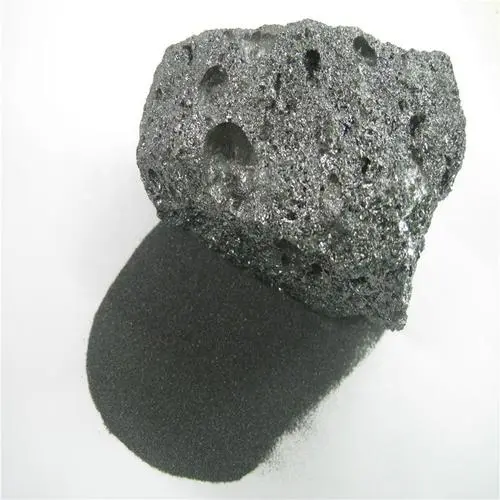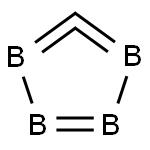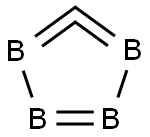Boron Carbide: General Properties; Industrial Preparation; Industrial Applications and Uses
Description and General Properties
Boron carbide, with its chemical formula B4C and its rhombohedral crystal lattice, is a low-density black solid (2512 kg.m–3) with a metallic luster. Its high refractoriness due to its high melting point (2450°C) allows it to be used for high-temperature applications. On the other hand, it is the hardest manmade solid (HK 3200) after synthetic diamond. Actually under high temperatures above 1300°C, its hardness exceeds that of diamond and cubic boron nitride. A Poisson ratio of 0.21 indicates its high anisotropy. It has a high compressive strength that may vary according to its density and percentage purity. It has a very low thermal conductivity (27 W/m.K).

With such a strength-to-density ratio and low thermal conductivity, boron carbide looks promising and ideal for a wide variety of applications. Because of its high hardness, boron carbide succeeded in replacing diamond as a lapping material. Boron carbide is a material with excellent properties. It has a list of important properties such as ultimate strength-to-weight (density) ratio, exceptionally high hardness, and high melting and oxidation temperatures (500°C).
In addition, it has a very low thermal expansion coefficient (5.73 μm/mK). However, owing to its high Young's modulus, it possesses less thermal shock resistance. Boron carbide is stable toward dilute and concentrated acids and alkalis and inert to most organic compounds. It is slowly attacked by mixtures of hydrofluoric-sulfuric acids or hydrofluoric-nitric acids. It resists attack by water vapor at 200 to 300°C. However, it is attacked rapidly when put in contact with molten alkali and acidic salts to form borates. In addition, B4C is characterized by a very high oxidation temperature.
Industrial Preparation
Boron carbide is either prepared from boron ores or from pure boron. The process involves the reduction of a boron compound. Usually, boron carbide is obtained by reacting boric acid or boron oxide and carbon at ca. 2500°C in an electric-arc furnace.
2B2O3(s) + 7C(s) —> B4C(s) + 6CO(g)
Its composition is variable over a relatively wide range. The boron/carbon ratio ranges from 3.8 to 10.4. Technical-grade boron carbide values are typically between 3.9 and 4.3. Later, the powder obtained is transformed into dense parts by hot pressing or cold forming and sintering. The cold formed and sintered material is less expensive, but sintering aids or other added bonding agents seriously degrade the material properties.
Industrial Applications and Uses
The applications of boron carbide are as wear-resistant components. Armor tiles in military applications such as in light hard bulletproof armor for helicopters and tanks or as thermal shield for the space shuttles. It is used in abrasives as lapping and polishing powders and in raw materials in preparing other boron compounds, notably titanium diboride. It is also us as an insert for spray nozzles and bearing liners and wire drawing guides. Finally, because of its boron content and elevated resistance to high temperatures, boron carbide is used as a shield for neutrons in nuclear reactors.
Related articles And Qustion
See also
Lastest Price from Boron carbide manufacturers

US $0.10/KG2024-08-21
- CAS:
- 12069-32-8
- Min. Order:
- 1KG
- Purity:
- 99.0%
- Supply Ability:
- 1000Tons

US $890.00/T2024-04-28
- CAS:
- Min. Order:
- 0.1T
- Purity:
- 98%
- Supply Ability:
- 20T



